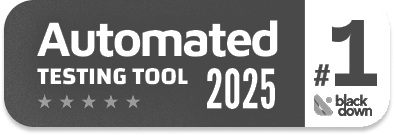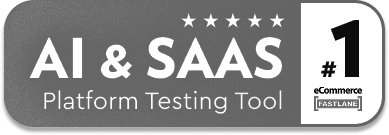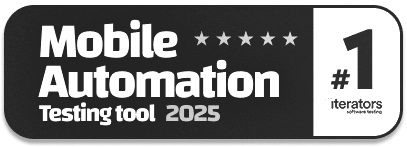Test Automation Frameworks: Everything You Need to Know in 2025
|
|
Deciding on the framework is one of the critical aspects of approaching test automation. According to a survey by GitHub, developers said that they spend 26% of their time writing test scripts, and 38% said automated tests positively impact their workday.
In this article, we’ll review some of the most common test automation frameworks. We will highlight their standout features so you know which one to sign up for.
What Are Test Automation Frameworks?
At their core, test automation frameworks are simply a set of guidelines for software testing. These guidelines can include coding standards and test data handling methods.
By implementing the proper test automation framework, a software team can reduce the amount of time and effort spent on setup, test creation, and maintenance. This means more intelligent resource allocation and tighter test coverage. Read this article to learn more about- What is a Test Automation Framework?
Types of Test Automation Frameworks
There are several test automation frameworks, each with its own approach to testing. In this section, we’ll take a look at the different types of test frameworks:
Linear Automation Test Framework
The key aspect here is to record the steps of tests as a sequence, with testers leveraging a user interface to save the steps as a test. This type of framework is also known as a record-and-playback framework. The linear automation test framework is most suitable for basic testing, for example, with simple websites and smaller or less complex software applications.
The advantage of linear automation test frameworks is that they’re typically simple to start with and make it easy to automate the manual testing process. However, linear test automation doesn’t offer the benefits of more complex testing frameworks like scalability and might not work well for end-to-end testing.
Read more about record-and-playback testing in 2025.
Module-based Test Framework
A modular test framework divides the application under test into smaller, isolated modules. This allows testers to create and run test scripts first to identify defects in individual components and then combine these scripts with building larger test cases for testing the application as a whole.
With the modular approach, testers can simply modify the test script of that specific module whenever a code change is introduced in the application and reuse all other test cases. This leads to reduced test time and test maintenance.
For example, while testing an e-commerce application, the modules login, add to cart, payment, viewing order information, etc., are created. Common steps are modularised into reusable steps and used whenever required.
Library Architecture Test Framework
Library architecture testing framework enables testers to group similar tasks within the test script into standard functions. These grouped tasks are then assigned to a library, ready to be used in other parts of the software application.
Like the modular-based test framework, this architecture also uses the modular approach, which helps minimize the cost of maintenance. Similarly, code reusability allows QA teams to speed up the testing workflow efficiently and cost-effectively.
For example, the login steps are coded and stored in the shared library. Any test case requiring user logging can call this library and use the login functionality, reducing redundancy and code complexity.
Keyword-driven Test Framework
In the keyword-driven test framework, test data is separated from script logic and stored inside a library file/object repository. Next, keywords for each action (like openBrowser, clickLoginButton, etc.) are stored in an external data table. Each keyword has its corresponding test implementation inside the library file.
Then, a test automation tool reads keywords based on the specified order of test steps in the data table and finds its corresponding test implementation inside the library file. Finally, it executes the test in the GUI of the software application.
Keyword-driven testing works in programming languages, including Java and Python. It also allows less-savvy users to run keyword-driven tests using keywords without the need for coding experience. These keywords are highly reusable across multiple test cases, reducing the cost of running and maintaining tests.
Data-driven Test Framework
Like the keyword-driven test framework, the test data and script logic are separated in the data-driven framework. The test data is stored in an external Excel sheet, CSV file, or SQL table file.
As the test data is not hard-coded in test scripts, testers can validate the same functionality of an application multiple times with different data sets in various test scenarios. For example, a login test could be executed multiple times using a table of usernames and passwords.
In addition, the data-driven testing framework enables testers to reuse test scripts, reduce test maintenance, and increase test coverage.
Hybrid Test Framework
As the name suggests, the hybrid test framework combines two or more testing frameworks to obtain the best test results. For example, the hybrid test framework in Selenium is a combination of the data-driven framework (externalizes test data in Excel, XML file, etc.) and the keyword-driven framework (externalizes keywords in a separate library file).
Another example is a test scenario for an e-commerce website, which might involve keyword-driven steps to navigate through the site. It uses data-driven inputs for user registration details from an external file, as well as modular components for reusable functions like login.
Test automation is crucial for agile testing processes, and hybrid test frameworks can offer the flexibility testing teams need to implement continuous integration/continuous testing while working on different aspects of the same project.
Behavior-driven Development Framework
Behavior-driven development (BDD) enables the creation of test scenarios for features that haven’t been coded yet. The goal is to shorten the feedback loop by expanding the communication between technical and non-technical people on the team.
BDD has proven to be nearly impossible to implement the way it was designed to, which is why very few companies use it today.
However, we think that the fundamental concept of BDD is excellent, which is why we’ve created a similar concept called SDD, which improves all the implementational aspects of BDD. Here is a BDD case study.
How to Build a Test Automation Framework
Read this article, How to Build a Test Automation Framework, to understand why you need a test automation framework and the detailed steps to build a stable and efficient one. Learn the drawbacks of legacy test automation frameworks and the solution to this problem.
Choosing Among Popular Test Automation Frameworks
This guide helps you choose among popular test automation frameworks. It discusses how automation testing helps in QA and its lifecycle. Learn in detail about the test automation frameworks and steps to choose the most suitable one. It also discusses an easy solution to all this hassle of finding the proper test automation framework.
Test Automation Best Practices
Read Test Automation Best Practices to learn about test automation concepts such as repeatability, data-driven testing, use of variables, etc. Also, learn about the best practices to keep your test automation efficient, stable, relevant, and valuable to the maximum.
Top 7 Automation Testing Tools to Consider
In this article: Top 7 Automation Testing Tools to Consider, we have discussed the top 7 test automation tools and their helpful features in detail. Know about JUnit, Postman, LambdaTest, Apache JMeter, testRigor, OWASP ZAP, and datadog to choose the supportive tools for your project or business.
How to Get The Best ROI in Test Automation
This informative article is an inventory of knowledge: How to Get The Best ROI in Test Automation. Learn what ROI is, why it is essential to measure it, and how to calculate it with a detailed example. Also, learn factors to be considered for successful test automation and drawbacks of why traditional test automation tools do not provide maximum ROI (with reasons and solutions).
Guide to End-to-end Testing Frameworks
A detailed guide about End-to-end Testing Frameworks helps you understand why they are needed. Read a detailed list of the most popular end-to-end testing frameworks to help you select the best one that suits your needs.
The Future of Test Automation Frameworks
In terms of where the test automation frameworks are headed in 2025, cutting-edge platforms like testRigor are using generative AI to get rid of scripting and further optimize and evolve the software testing process. Use plain English commands to write, generate, or record your test scripts. Seamlessly test web, mobile (hybrid and native), API, and desktop applications in simple English. Here are testRigor’s top features.
Read this futuristic article to learn how software testing will be done in the near future and the next 10 to 30 years.
Conclusion
“To make the future is highly risky. It is less risky, however, than not to try to make it” – Peter F. Drucker.
And as we know, the best way to predict the future is to make it ourselves. This is what we are trying to do with test automation. Using AI in software testing will make it easier, more stable, and more efficient than it is today.
Use the supportive testing tools to make this journey enjoyable and worthwhile. Intelligent tools like testRigor are here to ease your testing process with less effort and time. Use the saved time to build more robust tests, which enhance the test coverage and provide excellent product quality.
| Achieve More Than 90% Test Automation | |
| Step by Step Walkthroughs and Help | |
| 14 Day Free Trial, Cancel Anytime |












